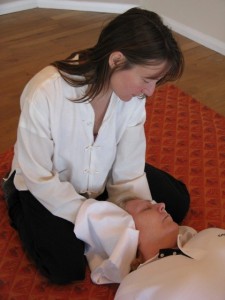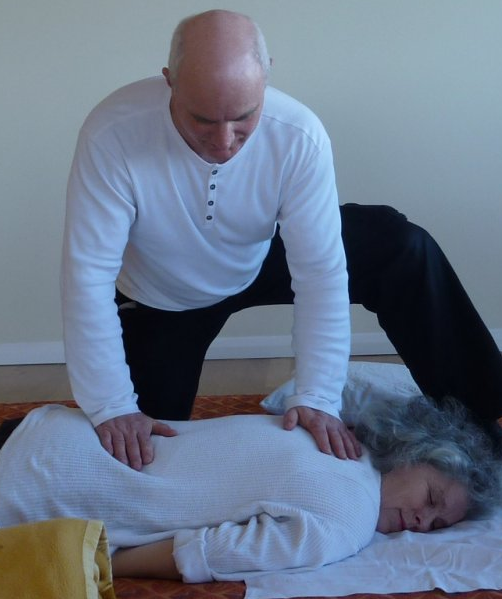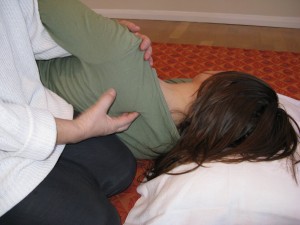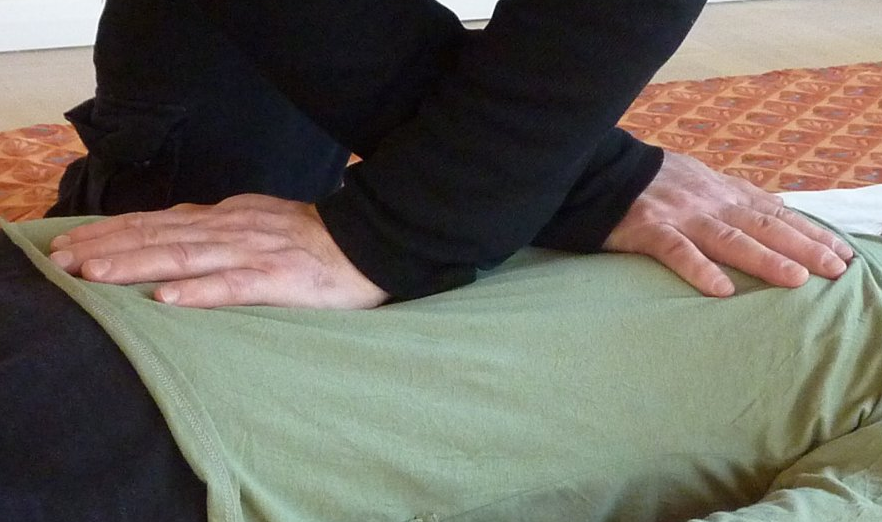WHAT IS SHIATSU?
Shiatsu is a healing art, originating in Japan, which uses the power of touch and pressure to enable each of us to contact our own natural self -healing qualities. In a Shiatsu session the Practitioner uses pressure with thumbs, fingers, palms, and sometimes knees, elbows and feet, to induce deep relaxation and a feeling of well being. It is sometimes dynamic, sometimes seemingly quite static, involving pressure on the limbs and torso, as well as rotations, the kneading and releasing of tight muscles and supporting areas of weakness.
To receive, Shiatsu is deeply relaxing and yet invigorating, leaving a feeling of tranquillity and a sense of being in touch with every part of one’s body. Giving Shiatsu is a like performing a moving meditation and often leaves the giver feeling as balanced and energized as the receiver.
Shiatsu was developed from traditional oriental massage and, in common with acupuncture and other oriental therapies, it works on the body’s energetic system, using the network of meridians, or energy pathways, which connect to the internal organs, as well as relating to our emotional, psychological, spiritual harmony and well being.
 The concept of the body as an ‘energetic’ organism comes from ancient Chinese thought, and through centuries of experience and study it has evolved into a system of medical theory and practice which is rich, poetic and life changing! This concept is now increasingly being acknowledged and explored in the West. Energy, known as Ki in Japanese (Qi in Chinese), flows through the body, rather like a system of rivers. Things may happen to upset the smooth flow of Ki causing blockages in some areas, weaknesses or stagnant pools in others. These in turn may lead to physical symptoms, psychological or emotional disturbance, or a feeling that ‘things are just not right’!
The concept of the body as an ‘energetic’ organism comes from ancient Chinese thought, and through centuries of experience and study it has evolved into a system of medical theory and practice which is rich, poetic and life changing! This concept is now increasingly being acknowledged and explored in the West. Energy, known as Ki in Japanese (Qi in Chinese), flows through the body, rather like a system of rivers. Things may happen to upset the smooth flow of Ki causing blockages in some areas, weaknesses or stagnant pools in others. These in turn may lead to physical symptoms, psychological or emotional disturbance, or a feeling that ‘things are just not right’!
Shiatsu uses physical pressure and meridian stretches to unblock the ‘dams’-which show up as tight muscles and areas of stiffness-and revitalize the empty areas-which may feel cold, weak or just needing to be held. Oriental medical theory provides a framework by which the Shiatsu practitioner can assess the body’s energetic state and needs, and can explain why the body holds tension in certain areas or points and feels weak in others.
RECENT RESEARCH
Recent research carried out by the University of Leeds on behalf of the European Shiatsu Federation establishes that Shiatsu treatment:
- Improves health and wellbeing
- Is safe
- Can benefit specific conditions
- Suggests a role for Shiatsu in public health
The study, carried out by Professor A.F. Long of the School of Healthcare, took place in Austria, Spain and the UK in 2006 and 2007.
948 clients participated in the study where their experience of Shiatsu treatment and the effects of it were studied over a period of 6 months. Shiatsu, like other oriental healthcare methods, has been practiced for centuries and aims primarily to promote wellbeing and to help prevent illness. Treatment involves an energetic evaluation of the client’s current condition and symptoms, followed by stimulation of the meridian channels using gentle pressure of fingers and palms. Shiatsu effects change in the overall energy system and in the client’s condition in a non-invasive manner.
RESEARCH RESULTS
The positive experiences and benefits reported in the study are consistent for the three countries. Interestingly, they are also maintained over time. The main effects reported by the participants were:
- Increased relaxation and a sense of calm
- Being more energised
- Being better able to cope
- A reduction in symptoms of stress and tension
- Improvement of problems with muscles and joints including back pain and postural misalignments
- Improvement in energy and reduction of fatigue
- Overall improvement in, and confidence about, health
- Motivation to make positive lifestyle changes, particularly with regard to diet and exercise
- Improved psychological wellbeing
- Changes in the use of conventional medicine and medication



